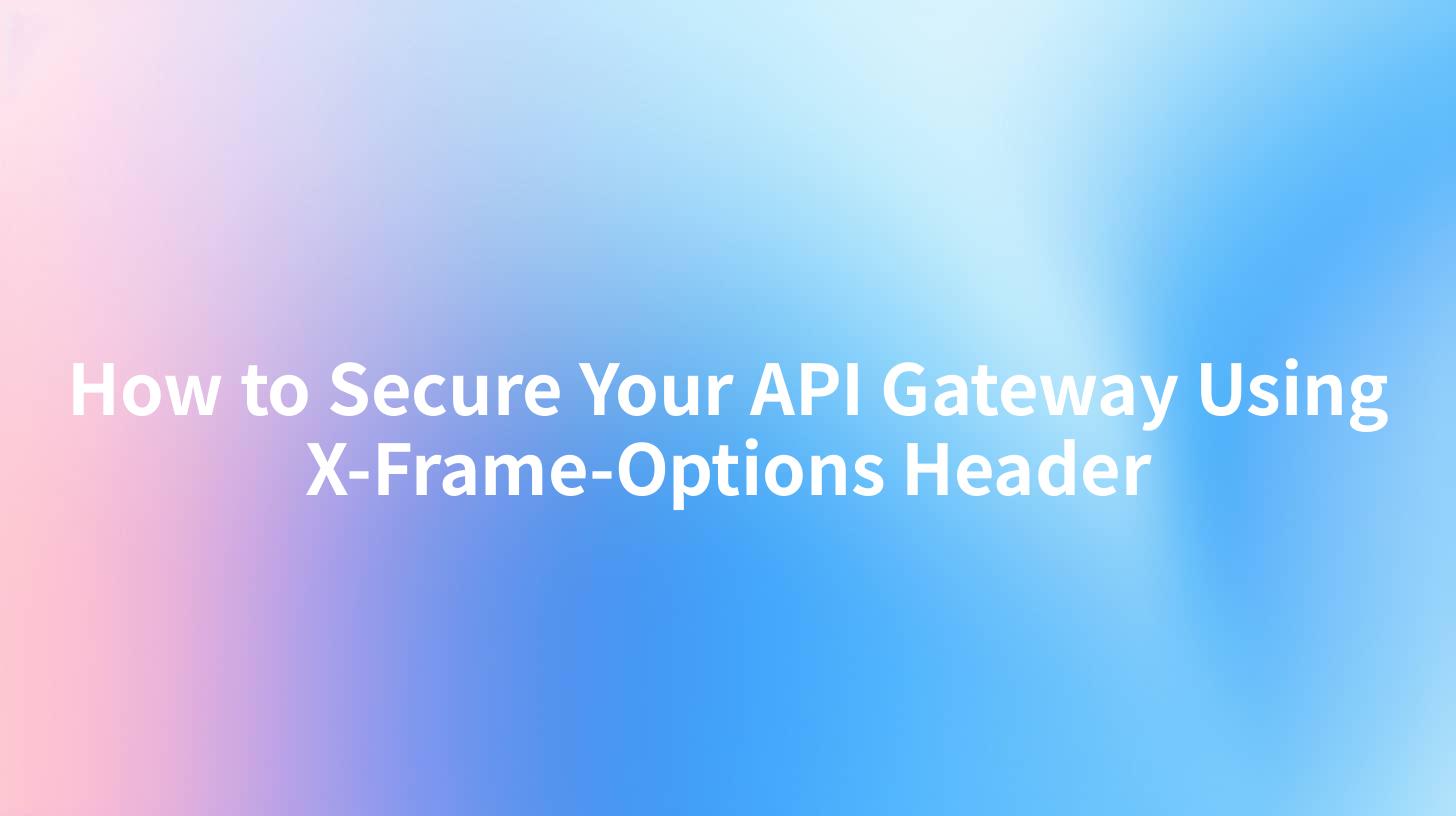How to Secure Your API Gateway Using X-Frame-Options Header

How to Secure Your API Gateway Using X-Frame-Options Header
In today's digital landscape, ensuring the security of your APIs and web applications has never been more important. As businesses increasingly rely on digital platforms and cloud-based services, the need for robust security measures continues to grow. One such measure is the use of the X-Frame-Options header in securing your API gateway from various vulnerabilities such as clickjacking. In this article, we will explore the implementation of X-Frame-Options in an Nginx environment as well as delve into its importance, particularly in the context of utilizing AI services, LLM Proxy, and OAuth 2.0.
What is X-Frame-Options?
The X-Frame-Options header is an HTTP response header that helps protect websites from clickjacking attacks. Clickjacking is an attack that tricks users into clicking on something different from what they perceive, potentially compromising confidential data or granting malicious sites access to sensitive actions. By using the X-Frame-Options header, developers can instruct the browser on whether or not to allow their web page to be displayed in a frame or iframe.
Values of X-Frame-Options Header
The X-Frame-Options header can have three acceptable values:
- DENY: Prevents any domain from framing the content. This is the strictest option.
- SAMEORIGIN: Allows the content to be framed only if the request originates from the same origin as the content. This is a balanced approach that ensures user safety while allowing internal framing.
- ALLOW-FROM uri: This allows a specific origin to frame the content, which could be useful in controlled environments but is less commonly supported by modern browsers.
By correctly implementing the X-Frame-Options header, organizations can effectively prevent unauthorized framing of their content, thus enhancing their overall security posture.
Importance of X-Frame-Options in Enterprise Security
In the context of enterprise security, particularly when using AI services, it's crucial to understand the ramifications of security breaches. With the rise in the integration of AI in business models, especially through API gateways, protecting the data that flows through these channels is paramount. Ensuring that AI services are secured against clickjacking attacks allows businesses to maintain control over their information and AI models.
Integrating AI into APIs
Implementing AI services through an API gateway can provide significant advantages to enterprises. However, this integration comes with its unique set of vulnerabilities. For instance, if malicious actors can successfully execute a clickjacking attack on an AI service/API, they could start sending fraudulent requests that compromise the integrity of the AI system or pull sensitive information.
Role of OAuth 2.0
Moreover, when utilizing OAuth 2.0 alongside your API gateway, adhering to security best practices is essential. OAuth 2.0 helps manage access tokens and ensures that applications can securely connect to APIs. However, if your OAuth implementation lacks proper security measures, it may be susceptible to various attacks, potentially leading to unauthorized access.
Days are gone when enterprises could operate under the illusion of being sufficiently secure because they solely relied on obscurity. The implementation of headers like X-Frame-Options doesn’t just foster a secure environment; it also enhances user trust in the services offered.
Implementing X-Frame-Options in Nginx
Implementing the X-Frame-Options header in an Nginx environment is straightforward. Below is an example of how to configure it correctly.
Nginx Configuration Example
To add X-Frame-Options in your Nginx configuration, follow these steps:
- Open your Nginx configuration file (typically found at
/etc/nginx/nginx.confor/etc/nginx/sites-available/default).
server {
listen 80;
server_name www.example.com;
# Add the X-Frame-Options header
add_header X-Frame-Options "DENY";
location / {
proxy_pass http://backend;
}
}
This brief configuration indicates the most secure option, which is DENY, thus preventing any framing of content on www.example.com.
- Test the configuration to ensure it’s correct:
nginx -t
- Reload Nginx to apply the changes:
sudo systemctl reload nginx
Example of X-Frame-Options with API Gateway
To see the full impact of secure configurations while using LLM Proxy, let’s consider the following configuration to secure an API that calls AI services.
server {
listen 443 ssl;
server_name api.example.com;
ssl_certificate /etc/letsencrypt/live/api.example.com/fullchain.pem;
ssl_certificate_key /etc/letsencrypt/live/api.example.com/privkey.pem;
# Apply X-Frame-Options
add_header X-Frame-Options "SAMEORIGIN";
location /api {
proxy_pass http://ai_service_backend;
proxy_set_header Host $host;
proxy_set_header X-Real-IP $remote_addr;
proxy_set_header X-Forwarded-For $
### 🚀You can securely and efficiently call the claude(anthropic) API on APIPark in just two steps:
**Step 1: Deploy the APIPark AI gateway in 5 minutes.**
APIPark is developed based on Golang, offering strong product performance and low development and maintenance costs. You can deploy APIPark with a single command line.
```bash
curl -sSO https://download.apipark.com/install/quick-start.sh; bash quick-start.sh

In my experience, you can see the successful deployment interface within 5 to 10 minutes. Then, you can log in to APIPark using your account.

Step 2: Call the claude(anthropic) API.


